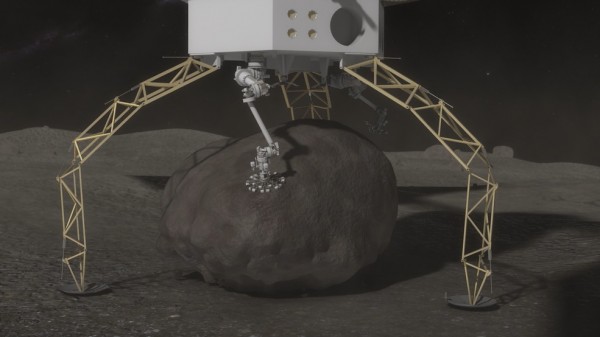By Ana Verayo, | September 21, 2016

As part of the Asteroid Redirect Mission, NASA plans to send a robotic spacecraft to an asteroid tens of millions of miles away from Earth, capture a multi-ton boulder, and bring it to an orbit near t
During a conference on NASA's Asteroid Redirect Mission at the NASA's Goddard Space Flight Center on Sept. 14, the White House revealed that we are not fully prepared for an asteroid strike, but the U.S. and NASA are working towards that goal.
Like Us on Facebook
The director of the White House Office of Science and Technology Policy, John Holdren, said that NASA would have to carry out more missions to study near-Earth objects that can pose a threat.
Asteroid impact events were mentioned during the conference, such as the air bursts in Tunguska River, Russia in 1908 as well as the February 2013 meteor strike in Chelyabinsk, Russia which produced a sonic boom so loud that the blast caused infrastructure damage.
Earlier this month, NASA successfully launched its first asteroid return mission known as the OSIRIS-Rex (Origins, Spectral Interpretation, Resource Identification, Security, Regolith Explorer) to retrieve material samples from an asteroid known as Bennu. Scientists believe that there is a one in 2,500 chance that Bennu will crash into Earth in the 22nd century.
The spacecraft blasted off from the Cape Canaveral Air Force Station in Florida. It will take two years to reach the target asteroid and return to Earth by 2020 with samples.
According to Michele Gates, the program director of NASA's ARM, the asteroid Bennu contains carbonaceous compounds that can shed light on the early evolution of our solar system. Gates revealed that the asteroid is made from 20 percent water.
During the conference last week at the NASA's Goddard Space Flight Center, Holdren said that the ARM mission is crucial to study the trajectory of asteroids like Bennu, that are life threatening to Earth, and for NASA to create an emergency response program for potential global disasters.
-
Use of Coronavirus Pandemic Drones Raises Privacy Concerns: Drones Spread Fear, Local Officials Say

-
Coronavirus Hampers The Delivery Of Lockheed Martin F-35 Stealth Fighters For 2020

-
Instagram Speeds Up Plans to Add Account Memorialization Feature Due to COVID-19 Deaths

-
NASA: Perseverance Plans to Bring 'Mars Rock' to Earth in 2031

-
600 Dead And 3,000 In The Hospital as Iranians Believed Drinking High-Concentrations of Alcohol Can Cure The Coronavirus

-
600 Dead And 3,000 In The Hospital as Iranians Believed Drinking High-Concentrations of Alcohol Can Cure The Coronavirus

-
COVID-19: Doctors, Nurses Use Virtual Reality to Learn New Skills in Treating Coronavirus Patients







